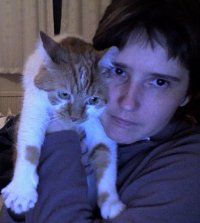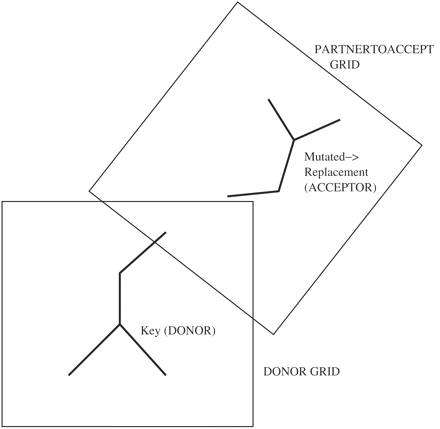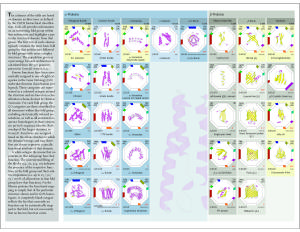Dr Alison Cuff
CATH Manager
I am responsible for the general management and manual curation of CATH.
Academic Background
As a undergraduate, I read for a BSc(Hons) degree in Biomedical Sciences at the University of Durham and then, after deciding I wanted to pursue Bioinformatics research, I took a MSc degree in Information Technology at the University of Teesside (this was all back in the days before MSc courses in Bioinformatics became available!).
My PhD was undertaken at the University of Reading, supervised by Dr Andrew Martin, and involved developing an automated analysis of the protein p53. P53 is a tumour supressor protein; mutations to this protein has been shown to be responsible for up to half of all human cancers. I developed a protocol for analysing single site mutations in this protein in terms of how they affected its functionality and/or the stability (see here for more information)
A significant piece of work during my PhD was the development of the 'CheckHBond' program, which takes any two residues that are hydrogen bonded within a protein, mutates one and then calculates if the hydrogen bond is maintained (see here )
The CheckHBond Program. One residue is chosen as the 'key' residue (in this case the donor). The protein is moved so its in a set 'standard orientation' as defined by the checkhbond algorithm. The other residue (the acceptor) is known as the 'partner' residue. A PARTNERTOACCEPT grid, which stores the location of donor atoms able to hydrogen bond with the partner residue, is generated and then rotated such that it is centred around the partner residue. If a hydrogen bond can be formed between the residues then a populated cell in the DONOR grid (which stores the location of the key residues donor atoms) will be concident with a populated cell in the PARTNERTOACCEPT grid.
I joined the CATH group as a postdoctoral researcher in March 2006.
Current Research Interests
When I haven't been busy with the curation of the CATH database, recent work has focused on investigating the existance of a 'fold continuum' and the validity of a hierarchical classification system. Results have shown that, for the most part, CATH superfamilies are structurally conserved and generally dissimilar to structures in other fold groups. However, in some of the most highly populated superfamilies, a considerable amount of structural diversity between relatives has been observed. Structural overlap between fold groups is limited to a few architectures that contain small motifs (such as the alpha/beta plait) which reoccur. A paper describing this work should (hopefully!) be published shortly.
I have also been involved in the creation of an educational tool called the Protein Chart.
The Protein Chart is published by Wiley and can be purchased here ( here)
Future work will involve the functional annotation of proteins and functional classification.
Selected Publications
Martin AC, Facchiano AM, Cuff AL, Hernandez-Boussard T, Olivier M, Hainaut P, Thornton JM
Hum Mutat19p149-64(2002 Feb)
Cuff AL, Martin AC
J Mol Biol344p1199-209(2004 Dec 10)
Cuff AL, Janes RW, Martin AC
Bioinformatics22p1464-70(2006 Jun 15)
Greene LH, Lewis TE, Addou S, Cuff A, Dallman T, Dibley M, Redfern O, Pearl F, Nambudiry R, Reid A, Sillitoe I, Yeats C, Thornton JM, Orengo CA
Nucleic Acids Res35pD291-7(2007 Jan)
Other Interests
All things film (including making them).I'm also trying to teach myself to knit.
Other CATH Team Members
| Person | Description |
|---|---|
| benoit | Former Member In September 2011 I moved to Osaka, Japan, to work as a Post-Doctoral Fellow in Dr Mizuguchi's group at the National Institute of Biomedical Innovation. Research Interests My main research interests include the study of interactions between proteins and other molecules, both at the structural and network levels. |
| clegg | [Andrew with a half-metre sausage, found (and eaten) on holiday in Germany recently] Senior Research Associate, CATH Development A member of the Orengo group since June 2008, I am the technical lead on the FuncNet platform, which brings together an ensemble of protein function analysis tools from various groups around Europe. This work is supported by the EU-funded EMBRACE and ENFIN research networks. |
| lee | [ ] Post Doctoral Research Fellow I work for the Midwest Center for Structural Genomics (MCSG). My responsibilities include selecting protein targets for structure determination, monitoring the success of target selection strategies, and providing homology models of relatives of MCSG structures. |
| lees | Gene3D Since arriving in October 06 I've been doing development of the Gene3D database in collaboration with Corin Yeats. I also maintain the current Gene3D website. I am involved in several collaborations with experimentalists. Recently (June 2009) I have started a new post employed by ENFIN coordinating a chromosome condensation prediction project, with Juan Ranea (Malaga) and the Ellenberg group (EMBL) (amongst others). We are using novel high throughput phenotype data (Ellenberg Group) a… |
| lewis | Tony Lewis [Me in Malaysia] Senior Programmer I was heavily involved in the complete rewrite of the CATH update procedure that culminated in CATH v3.0.0. I am still involved in maintaining and developing CATH in an ongoing consultancy capacity. Academic Background |
| orengo | See departmental staff page |
| perkins | [Me] London Pain Consortium PhD Student I am a member of the London Pain Consortium, an initiative formed in 2002 by a grant from the Wellcome Trust. I am currently moving into the first year proper of my PhD, supervised by Christine and based in the CATH lab, having completed a year of 3 rotations, working on projects with different labs. |
| phil | [Me] Role in CATH I am post doctoral research associate. One of my responsibilities is the target selection database for the Center for Structural Genomics of Infectious Diseases's structural genomics project. Research Interests CSGID applies state-of-the-art high-throughput structural biology technologies to experimentally characterise the three dimensional atomic structure of targeted proteins from pathogens in the NIAID Category A-C priority lists and organisms causing emerging and re-eme… |
| redfern | Dr Oliver Redfern [Posing on the southbank of the Thames] Post-Doctoral Research fellow I work as part of the Midwest Consortium for Structural Genomics, aiding target selection and analysis of the novelty of the protein structures they produce. In parallel, I also develop methods for homology recognition and function prediction from protein structure and sequence. |
| reid | [Me enjoying a traditional Japanese kaiseki meal in a ryokan somewhere outside Kyoto] Me enjoying a traditional Japanese kaiseki meal in a ryokan somewhere outside Kyoto PhD student I am currently nearing the end of my PhD and planning to submit by the end of the year. |
| rentzsch | [Me] Former PhD student I did my PhD in the lab between 2007 and 2012, funded by a EU grant (ENFIN). The ENFIN Network of Excellence aims at close collaboration between experimental and computational groups throughout Europe. I've also worked as a research assistant here. |
| sillitoe | [Me with one of the Sillitoe clan (I'm the one on the right)] CATH Technical Manager I am responsible for the technical aspect of CATH. This generally involves maintaining and developing both the front-end interfaces (internal and external web pages and webservices) and back-end code library and databases. |
| studer | {{ :cathteam:picture.jpg|Me}} {Role in CATH} Description of role in CATH Academic Background Current Research Interests Your research interests go here. Put some pretty pictures in with something like the following: {{ :cathteam:consensus_contact_map_example.png?300 |Example of a consensus structural alignment and contact map }} |
| yeats | Gene3D and BioMiner Gene3D: Design and development, HMM library construction and prediction verification, and web services. Academic Background PhD at the Sanger Institute (2004), supervised by Alex Bateman (Pfam). Thesis: Biological Investigations Through Sequence Analysis. |


